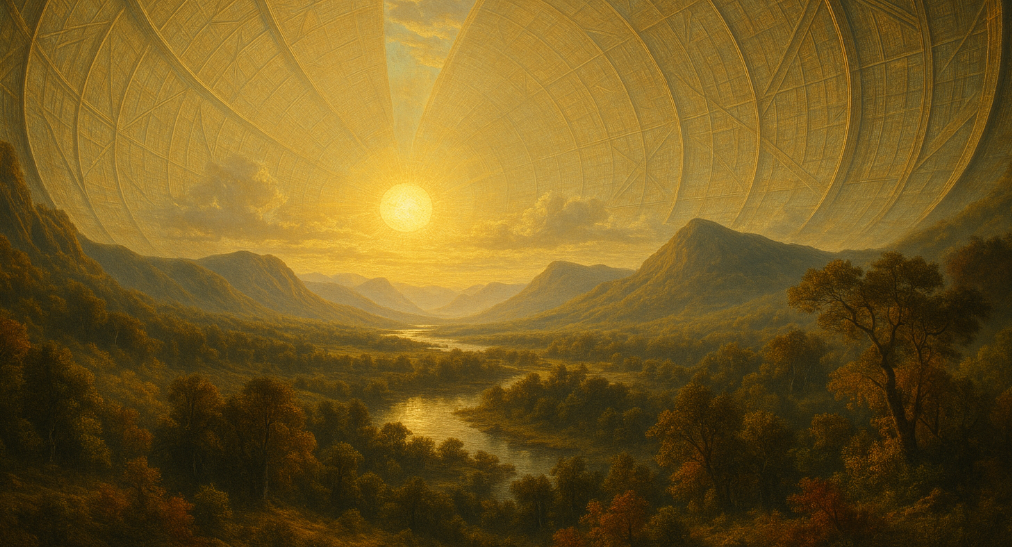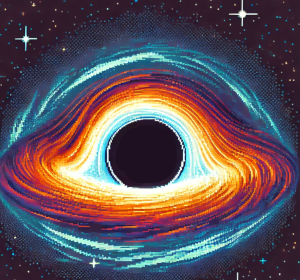
Are These 7 Stars Signs of Alien Megastructures?
A team of astronomers sifted through data on five million stars to search for signs of alien megastructures, Dyson spheres, built to harvest starlight. They found seven promising candidates that defy easy explanation. Could this be our first glimpse of extraterrestrial engineering?
Let’s get one thing straight: no, scientists haven’t found aliens. But they might have seen something weirder, stars that shine a little too brightly in all the wrong places.
Out of a cosmic haystack of 5 million stars, researchers found seven that glow in a way that might be consistent with one of the most far-out ideas in science fiction: a Dyson sphere, a hypothetical megastructure built by advanced aliens to harness their star’s energy.
Yes, you read that right. Let’s break it down.
The Sci-Fi Idea That Got Real (Sort of)
Back in 1960, physicist Freeman Dyson asked a wild question: What if aliens needed more energy than their star could provide? His answer? Build a gigantic shell—think billions of solar panels—around the star to collect all its energy. Today, we call that a Dyson sphere.
And or, it featured in a classic episode of Star Trek: The Next Generation
If such a structure exists, we probably wouldn’t see it with our eyes. It would block most visible light from the star. But it wouldn’t keep all the energy. That energy would be re-emitted as waste heat, glowing in the infrared.
And infrared is exactly what this new study looked at.
A New Kind of Alien Hunt
Forget flying saucers. The researchers behind this study, part of “Project Hephaistos,” looked for technosignatures, clues that a civilization might exist, based not on messages, but on engineering.
Using data from three massive sky surveys (Gaia, which tracks star positions, 2MASS (near-infrared), and WISE (mid-infrared)), they created a pipeline to spot stars that emit way too much heat. Not just warm. Weirdly warm.
Out of millions of stars within 1,000 light-years, they found seven that passed every test. Not dusty, not variable, not young, and no obvious natural reason for their excess glow.
Just seven. From five million.
How to Spot an Alien Heat Lamp
To catch a potential Dyson sphere, the team had to eliminate all the usual suspects. And there are a lot:
- Dusty baby stars that naturally glow in infrared? Gone.
- Old binary stars with flickering light signatures? Cut.
- Background galaxies that photobomb infrared images? Nope.
- Bad data? Filtered using a neural network trained to spot fuzzy or messy regions of space.
Only seven stars, all small red M-dwarfs, made it through this interstellar obstacle course.
So… Did We Just Find Alien Megastructures?
No. Probably not. Let’s not get carried away.
There are still plenty of possible (and boring) explanations, like rare debris disks or unknown astrophysical quirks. But here’s why this study is exciting:
- These seven stars don’t act like young stars.
- They’re not sitting in dusty areas.
- Their heat glow doesn’t match anything we’d expect from natural processes.
And that’s enough to raise eyebrows, and telescopes.
Why M-Dwarfs Matter
All seven stars are M-dwarfs: the universe’s introverts. They’re small, cool, and dim, making them ideal targets for Dyson-sphere detection. Because they’re already faint, any extra infrared glow stands out more dramatically.
But that also raises questions: why would a civilization build a megastructure around such a low-energy star?
Maybe because they live long, M-dwarfs can burn for trillions of years. If you’re playing the long game, cosmic chess instead of checkers, that’s a solid energy source.
The Data Dilemma
Here’s the catch: most of this data is from public space surveys. We’re talking low-resolution images and faint signals. To figure out what’s really going on, we need better data. Think follow-up spectroscopy, infrared zoom-ins, and maybe even a James Webb Space Telescope cameo.
But for now, these seven stars are the best candidates we’ve ever seen for something truly otherworldly.
Let’s Explore Together
Are these Dyson spheres? Probably not. But that’s not the point. The beauty of this study is that it dares to ask a wild question—and backs it up with smart science.
So let’s keep asking.
- What do you think we’ll find if we keep looking?
- If you had to build a Dyson sphere, what kind of star would you pick?
- What’s the coolest “almost alien” science story you’ve heard recently?
Drop your answers in the comments, or tag us with your take. And don’t forget to share this post with that one friend who’s still convinced aliens built the pyramids. (We’re not saying they didn’t—but maybe they were just big fans of infrared radiation.)



